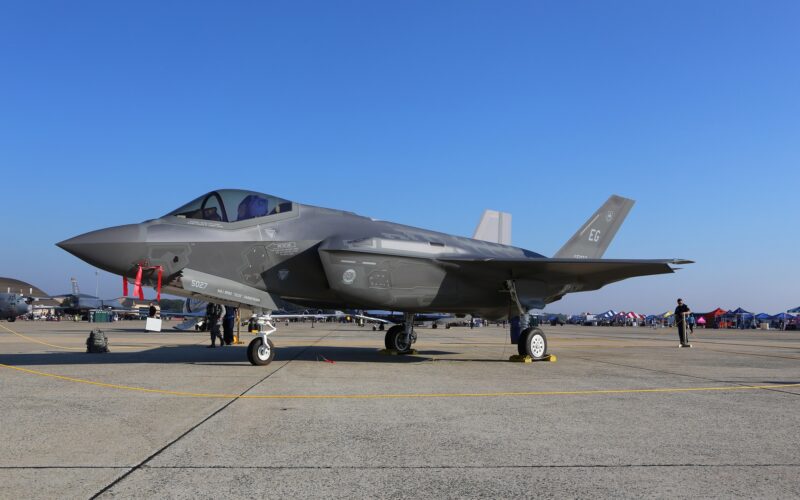Raytheon Technologies Corporation (RTX) has announced that it has successfully conducted the laboratory demonstration of the Enhanced Power and Cooling System or the EPACS for the F-35 fighter.
During the test conducted by Collins Aerospace, a subsidiary of RTX, the system’s capabilities were demonstrated. The EPACS system is expected to deliver more than double the current cooling capability of the F-35, enabling additional growth beyond Block 4 requirements.
“We were trying to look how far we can push the machine. We pushed to 2.5 times the current cooling rate,” Henry Brooks, president of Power & Controls at Collins Aerospace said in a briefing during the Paris Air Show 2023. “The idea was to solve if we can create a system that can play its role for the remainder of the aircraft’s service life.”
EPACS is compatible with all three variants of the F-35 and fits within the existing envelope of the aircraft. It encompasses various components, including an air cycle system, electric power generator, and controller developed by Collins Aerospace, as well as an auxiliary power unit provided by Pratt & Whitney.
“Using our state-of-the-art test lab in Windsor Locks, Connecticut, we have begun demonstrating the system’s capacity to deliver more than twice the current cooling capability, validating EPACS as the best solution for Block 4 and beyond,” Ira Grimmett, the Vice President of Environmental & Airframe Control Systems for Collins Aerospace commented in a press release. “We are excited for the opportunity to work with Lockheed Martin and the Joint Program Office to bring this solution forward.”
Also at the Paris Air Show 2023, Jill Albertelli, president of Pratt & Whitney’s Military Engines business, has said that significant progress had been made on the F135 Engine Core Upgrade (ECU). The company plans to complete the preliminary design review (PDR) and enter the detailed design phase in early 2024.
“Multiple business cases were assessed, showing that the upgrade was the way to go,” Albertelli said during a press briefing. “It is the only combat-proven tested engine out there, performing so well to this day that it hasn’t been upgraded yet.”
According to Pratt & Whitney, the ECU will cut life cycle costs by up to $40 billion. Available in 2028, it will apply to all variants of the F-35 (A, B and C) fighter.

